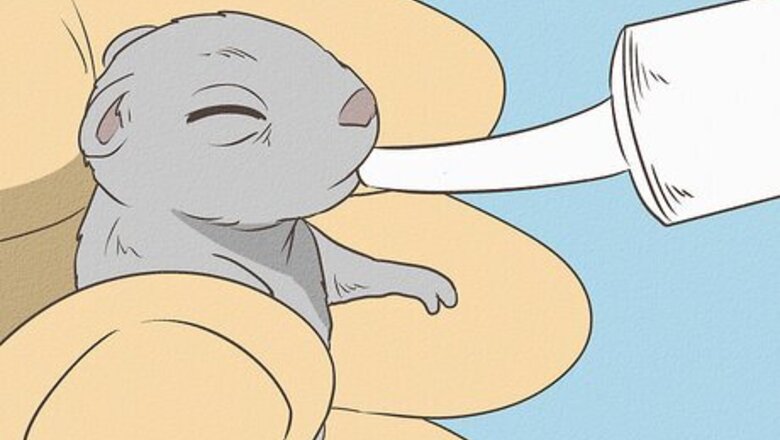
views
Taming Orphaned Baby Mice

Feed the mice. If you find mice that have been orphaned, they’re probably in desperate need of food. Try to get them fed as quickly as possible. They’ll need to be fed liquid nutrients with droppers, since they’re still very young and would normally be nursing. By feeding them as babies, you're getting them to think of you as a mother, which is key to taming them from a young age. Feed baby mice every two hours. This can become tiresome, but it’s what’s necessary to keep them alive until they’re weaned. If there’s another nursing mother nearby, they should be nursed by her. Mice are good mothers and will nurse babies that aren’t their own. Assuming there’s not a nursing mother nearby, the best things you can give the babies are goat milk or kitten formula. Do not try to feed them cow milk, as it’s very hard to digest.
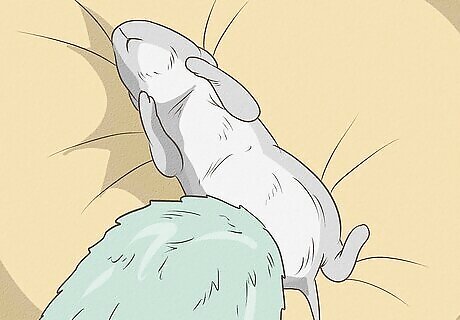
Massage them to encourage elimination. Baby mice will not automatically urinate or defecate. They need to be physically encouraged to do so. Rub gently on their abdomens and their genitals to induce urination after eating. This is another way to gain their trust and develop their dependence on you, making them tame. The best way to do this is with a warm, damp washcloth. Do this each time the mice feed until you notice that they urinate on their own after eating.
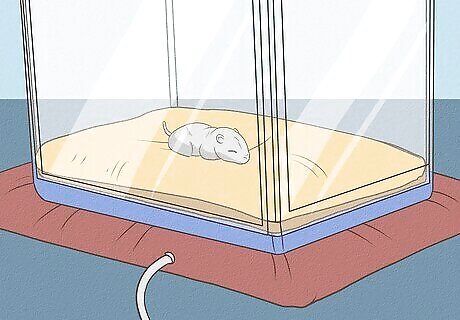
Keep the mice warm. Normally, baby mice would be kept warm by their mother’s body heat. You need to simulate this as best you can. Create a nest for them that is between 75°F (24°C) and 90°F (32°C). The mice must be kept warm at all times. A good option is a plastic critter carrier lined with a towel. Then, place either a hot water bottle or an electric heating pad (set on the lowest setting) under the towel. Give the mice a cooler area within their space that they can move to if they get too hot.

Treat diarrhea. Diarrhea is a common problem for baby mice and can be serious. The baby mice can become dehydrated and die. Luckily, you can treat diarrhea in mice with over the counter treatments that are suitable for humans. When you care for your baby mice in this way, they continue to have positive associations with you as their keeper. Pedialyte is excellent for helping baby mice stay hydrated and recover from diarrhea. Feed it to the babies with a dropper.
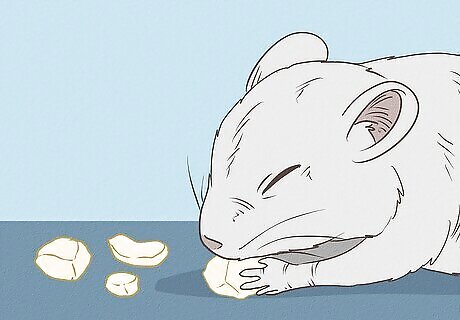
Wean the babies. Once the babies are about four weeks old, you can begin to wean them. To do this, add some crushed solid food to the liquid feedings, as well as some simple fruit for them to chew on. Now the mice will be less dependent on you for feeding, but they should also be fairly tame from the bottle feeding up to this point. Rodent blocks are available at pet stores and can be crushed up and put inside a dropper. Place a slice of apple or a peeled grape near the babies so that they can practice chewing and eating solid food.
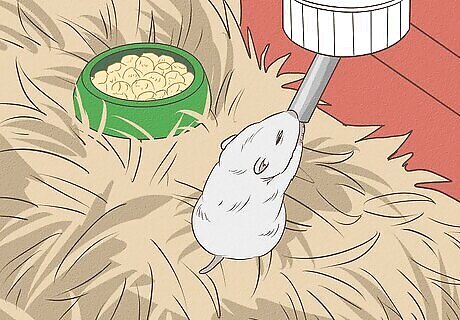
Provide healthy conditions. Dirty cages and coats can cause health problems. If your mice don't like their conditions, they will be less good as pets. Keep your mice healthy by making sure they have everything they need. This includes: Fresh water always available via a bottle Removing leftover, uneaten food from the cage each time you feed the babies Cleaning up any messes they make, as well as feces in the cage
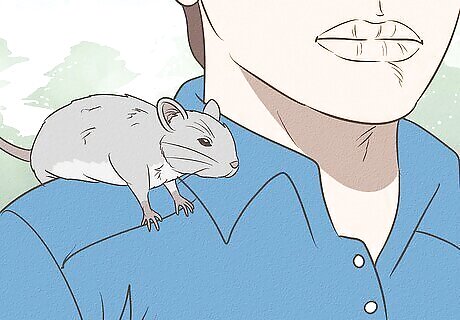
Handle the mice regularly. These mice will have essentially imprinted on you, since you’ve raised them since they were babies. They will have the impression that you’re their mother. Continue to handle them regularly and they will be wonderful pets. Some people even let their mice sit on their shoulders while they go for a walk or a bike ride!
Taming Mice From the Pet Store
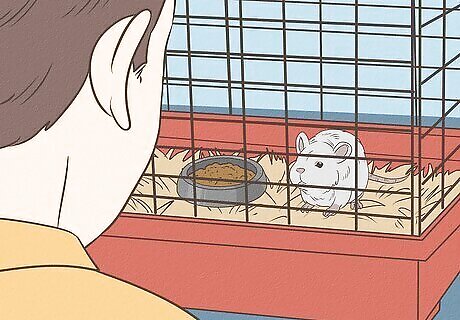
Spend time with your mouse. While your mouse is in the cage, spend time talking to it, feeding it, and giving it fresh water. These things will give the mouse positive associations with your presence. This is important because you’re so big that you can easily be seen as a threat. Get down to the same level as your mouse’s cage. That way, the mouse won’t always see you as a giant towering over it.
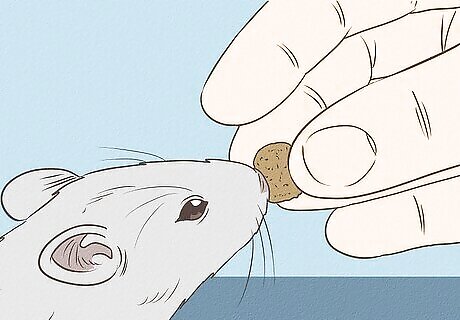
Hand-feed the mouse. Mice love treats. Feeding the mouse treats from your hand will give it more positive associations with you. However, you want to be careful not to get bitten, and not to encourage biting in the future. Put a treat in the palm of your hand and lower your hand into the cage slowly. The treat can be a piece of fruit or a rodent treat from the pet store. Wait for the mouse to approach you. Let it take the treat. This will teach the mouse to consistently approach you and that your hand is safe.
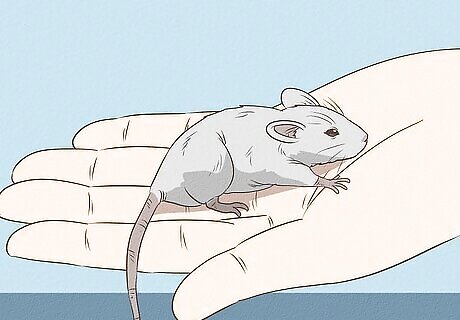
Pick up the mouse. Once the mouse is used to your hand coming into the cage, and it doesn’t see you as a threat, pick it up. You can just gently scoop the mouse into your hand. If this is difficult, you can grab the mouse gently from the base of his tail and then quickly put him into your other hand. If you’re going to use the tail to pick up your mouse, do so by the very base, and only do so for a moment. It can be quite painful for a mouse to be held or dangled by its tail.
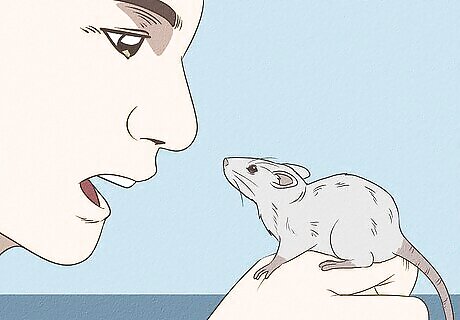
Hold the mouse for increasing periods of time. While you hold the mouse, speak to it gently, and try to make sure the experience is pleasant and not stressful. Do this everyday, spending more and more time with your mouse until it’s very comfortable with you. Always try to end the holding session on a positive note. For example, if the mouse urinates on you, or bites you, and you immediately put it back in its cage, it will learn that those behaviors will get it to go home. Instead, aim to put the mouse back after a desired behavior, such as approaching food in your hand, or remaining still for a long moment.
Taming Wild Mice
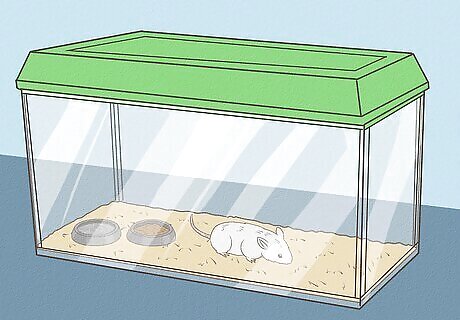
Keep the mouse in a cage. In order to tame a wild mouse, you’ll need to catch it first. There are many ways to catch mice. You want to make sure that you catch the mouse in a way that won’t hurt it or scare it too much if possible. You can buy mouse traps that will simply catch the mouse without causing it any kind of injury. Once you’ve caught the mouse, an aquarium or small rodent cage will do. Make sure the mouse has comfortable bedding, fun toys or furniture to play on, and a water bottle.
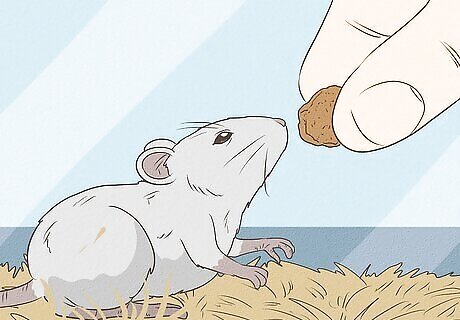
Get the mouse’s attention with treats. Some people call this “bribing” the mouse. However, all you’re really doing is letting the mouse know that you’re not a threat, and in fact, have positive things to offer. Put your hand (with a treat on it) into the cage. Let the mouse approach and come onto your hand to get the treat.
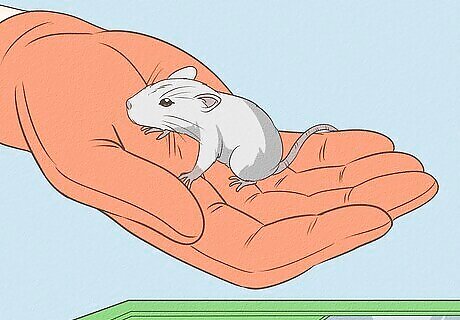
Handle the mouse with gloves on. Cloth gardener’s gloves work well for this. Gently scoop up the mouse out of the cage. Handle it for a few minutes, and let the mouse crawl on you. Then, put the mouse gently back in its cage. Give the mouse treats while it crawls on you. This will give it positive associations with you. Do this as often as you and the mouse have the patience for. The more you practice, the quicker you’ll tame your mouse.
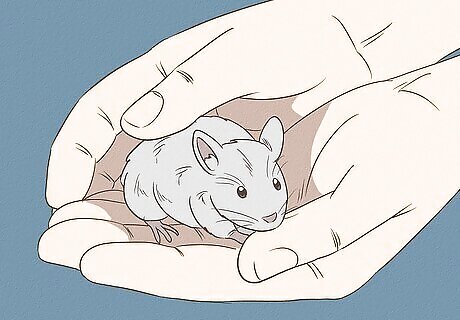
Remove the gloves. After a week or two, try taking the gloves off when you handle the mouse. Do this gently. If the mouse seems afraid or bites you, you can put the gloves back on and try again. Continue practicing and picking up the mouse without gloves until it’s easy and the mouse feels comfortable.

















Comments
0 comment